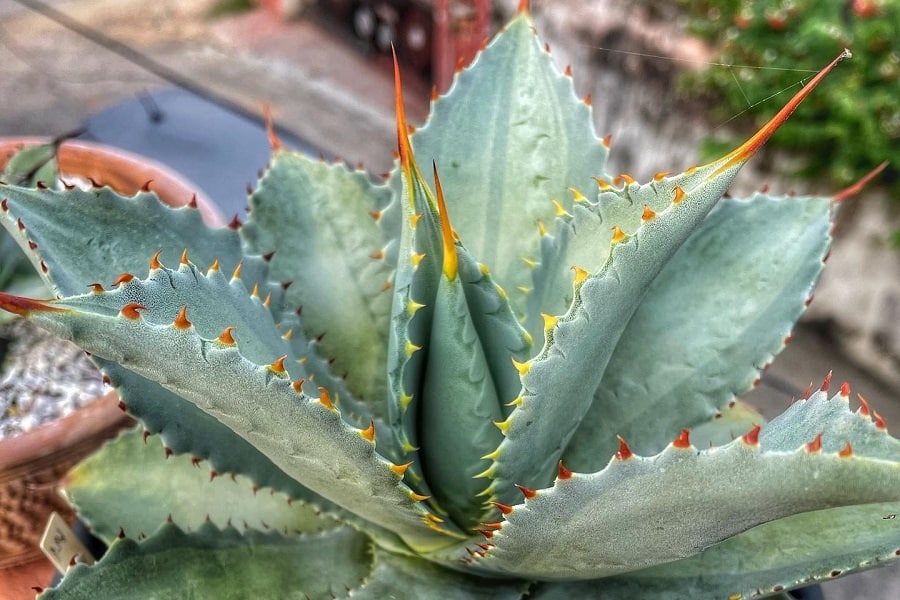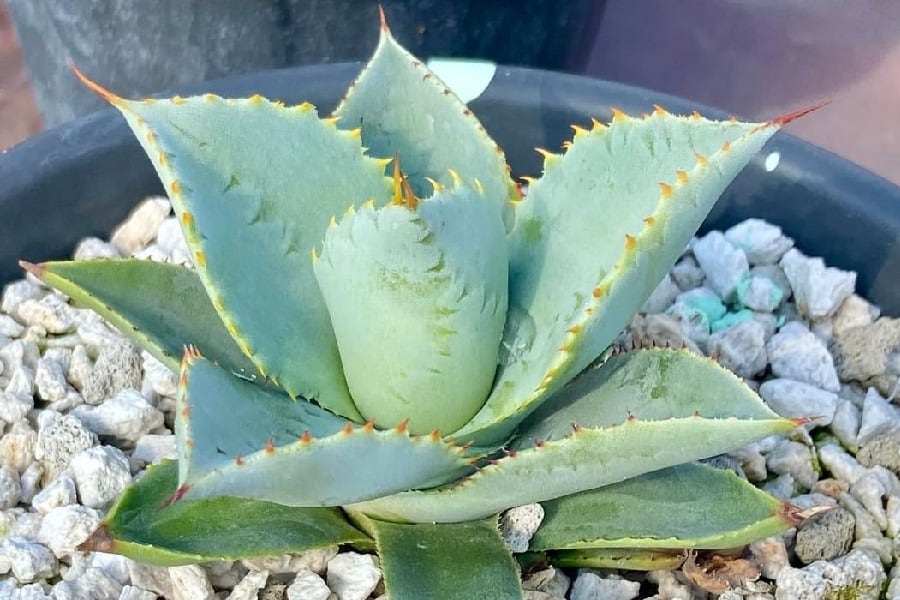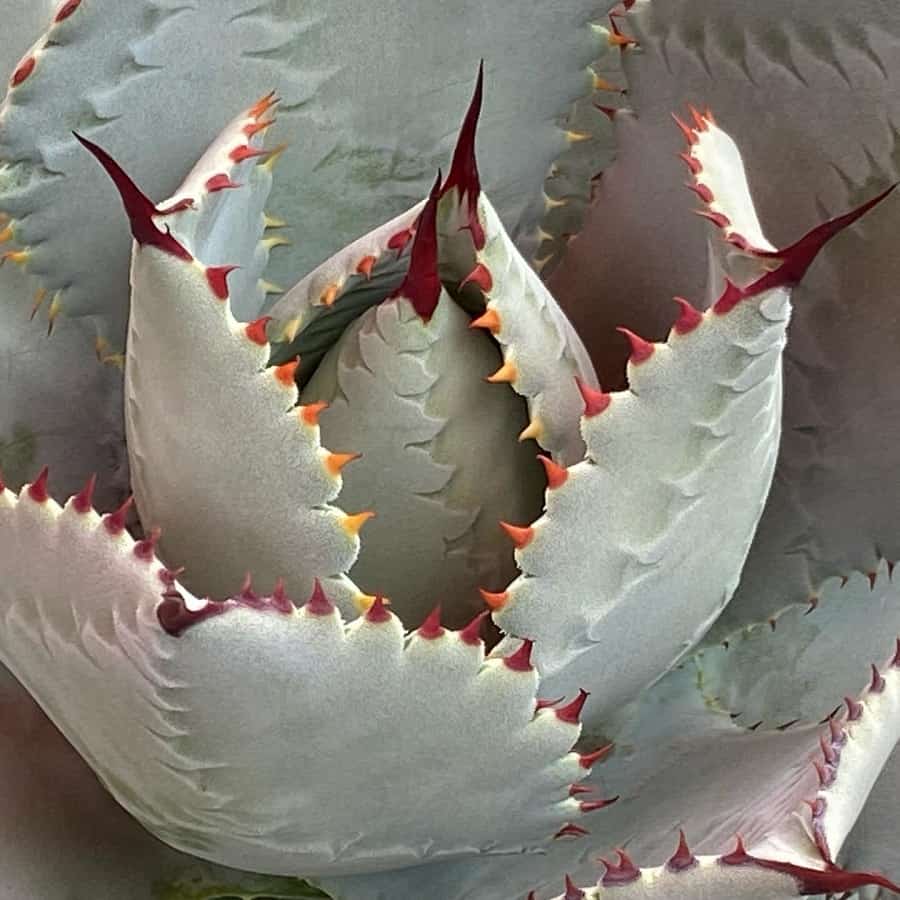Agave pygmaea Dragon Toes: Characteristics and Care
Are you always on the go, with barely any time to care for high-maintenance plants? Meet Agave pygmaea Dragon Toes, the ultimate low-fuss succulent that will transform your home into a lush, green oasis without demanding much of your time or effort. This pint-sized powerhouse is about to become your new best friend in the plant world!

Contents
About Agave pygmaea Dragon Toes
This dwarf succulent is a true showstopper, growing up to just 12 inches tall with thick, blue-green leaves that taper off into fiery red tips, complete with quirky red teeth along the margins. It’s like having a tiny dragon guarding your living space, but one that’s way easier to care for than a real-life mythical beast.
Agave pygmaea Dragon Toes is an evergreen succulent that thrives on neglect, making it the perfect plant for busy folks or those with a not-so-green thumb. Its drought-tolerant nature means you can go on vacation without worrying about your plant keeling over.
Related Post:
70+ Types of Agave Plants with Pictures
Agave pygmaea Dragon Toes Care Tips
Light
While Agave pygmaea Dragon Toes loves basking in direct sunlight, it can adapt to slightly shadier conditions too. If you’re short on natural light, a simple grow light can work wonders, ensuring your pint-sized pal stays happy and healthy.
Water
Here’s the real lifehack – you can almost forget about watering this succulent! Only give it a drink when the soil is bone dry, and it will reward you with its vibrant, low-maintenance charm.
Soil
Opt for a well-draining succulent soil mix to prevent waterlogging, which can spell disaster for your dragon toes. This plant prefers a slightly acidic to neutral pH environment.
Fertilizer
An appropriate succulent fertilizer applied once a year is more than enough to keep your Agave pygmaea Dragon Toes looking its best. No need for fancy concoctions or complicated schedules.
Climate
Agave pygmaea Dragon Toes thrives in hot and dry climates, preferring the USDA hardiness zones 8-10. When the temperatures drop during winter, these cold-hardy succulents simply go dormant, requiring you to bring them indoors to protect them from frost. Maintaining the right humidity levels is also key to keeping your dragon toes in top shape.

Potting and Repotting
Given their slow growth rate, these petite plants rarely need repotting. However, when the time comes to upgrade their living quarters, take care not to bury the rosette – the crown of the plant should sit slightly above the soil line. Deep planting can lead to rot, so cover the stem with pebbles instead to ensure proper airflow to the roots. When transplanting, opt for a pot just 1-2 inches wider to avoid overwhelming your dragon toes.
Pests and Diseases
While generally resilient, your scaly friends can occasionally fall victim to the dreaded agave snout weevil, a beetle-like pest that lays eggs within the plant, causing it to collapse over time. Beyond this formidable foe, proper care is key to preventing fungal infections and root rot, ensuring your dragon toes remains a healthy, happy addition to your home for years to come.

Agave pygmaea Dragon Toes Propagation
The best part? Propagating Agave pygmaea Dragon Toes is a breeze, allowing you to rapidly multiply your collection of these low-maintenance marvels in just a matter of weeks. Whether you choose to grow them from pups or seeds, the process is straightforward and rewarding, ensuring you’ll have a steady supply of dragon toes to brighten up every nook and cranny.
From Pups
- Gently remove offsets (pups) from the parent plant, making sure to keep the roots intact.
- Allow the offsets to callus over for a few days in a shaded area.
- Plant the pups in a well-draining soil mix and water when the soil is dry.
- Watch as your dragon toes family multiplies before your eyes!
From Seeds
- Sow seeds in a succulent soil mix and mist with water.
- Cover the pot with plastic wrap to maintain humidity.
- Keep the pot in a warm, indirectly lit spot until seedlings emerge (about a month).
- Remove the plastic and enjoy watching your dragon toes babies grow!
With its striking appearance and fuss-free care requirements, Agave pygmaea Dragon Toes is the ultimate lifehack for busy plant parents seeking a touch of magic in their homes. So, what are you waiting for? Adopt your own little dragon today and experience the joy of effortless gardening!
